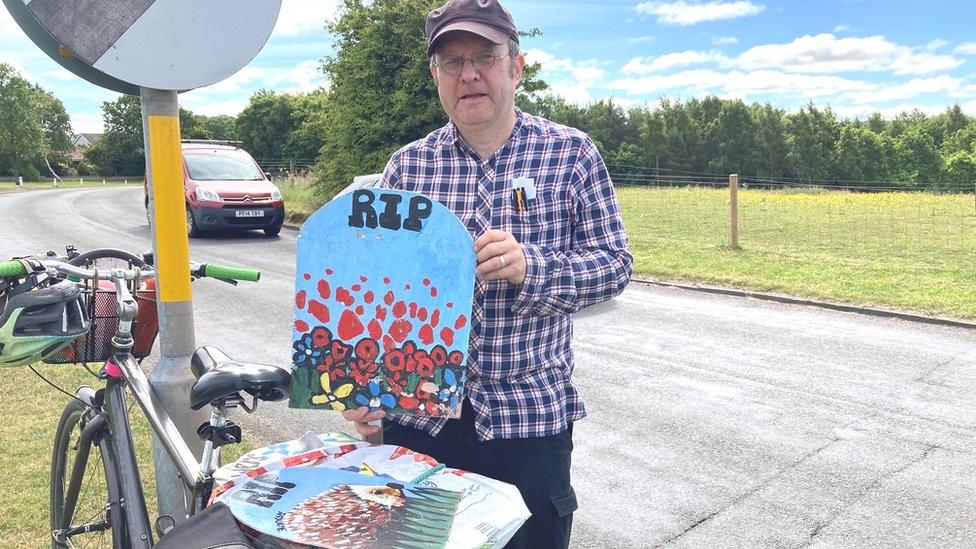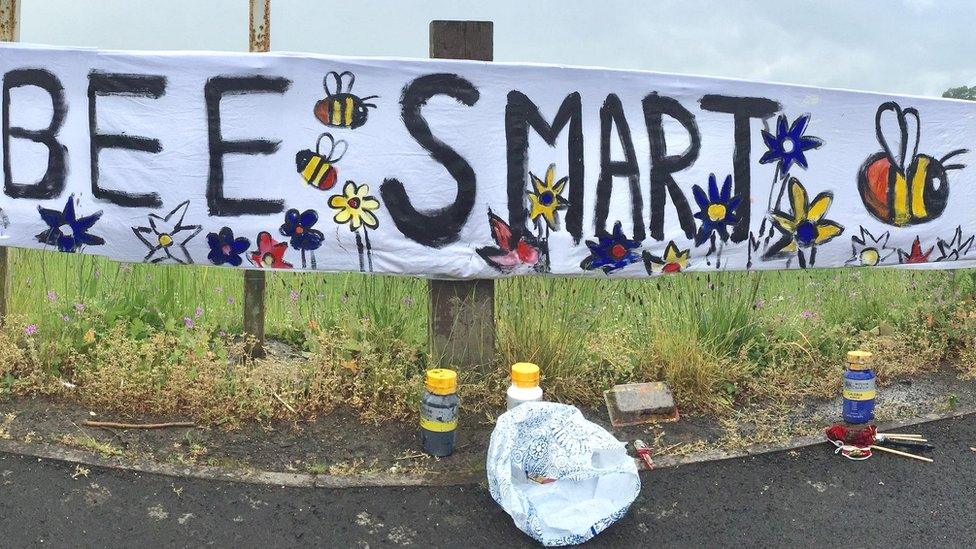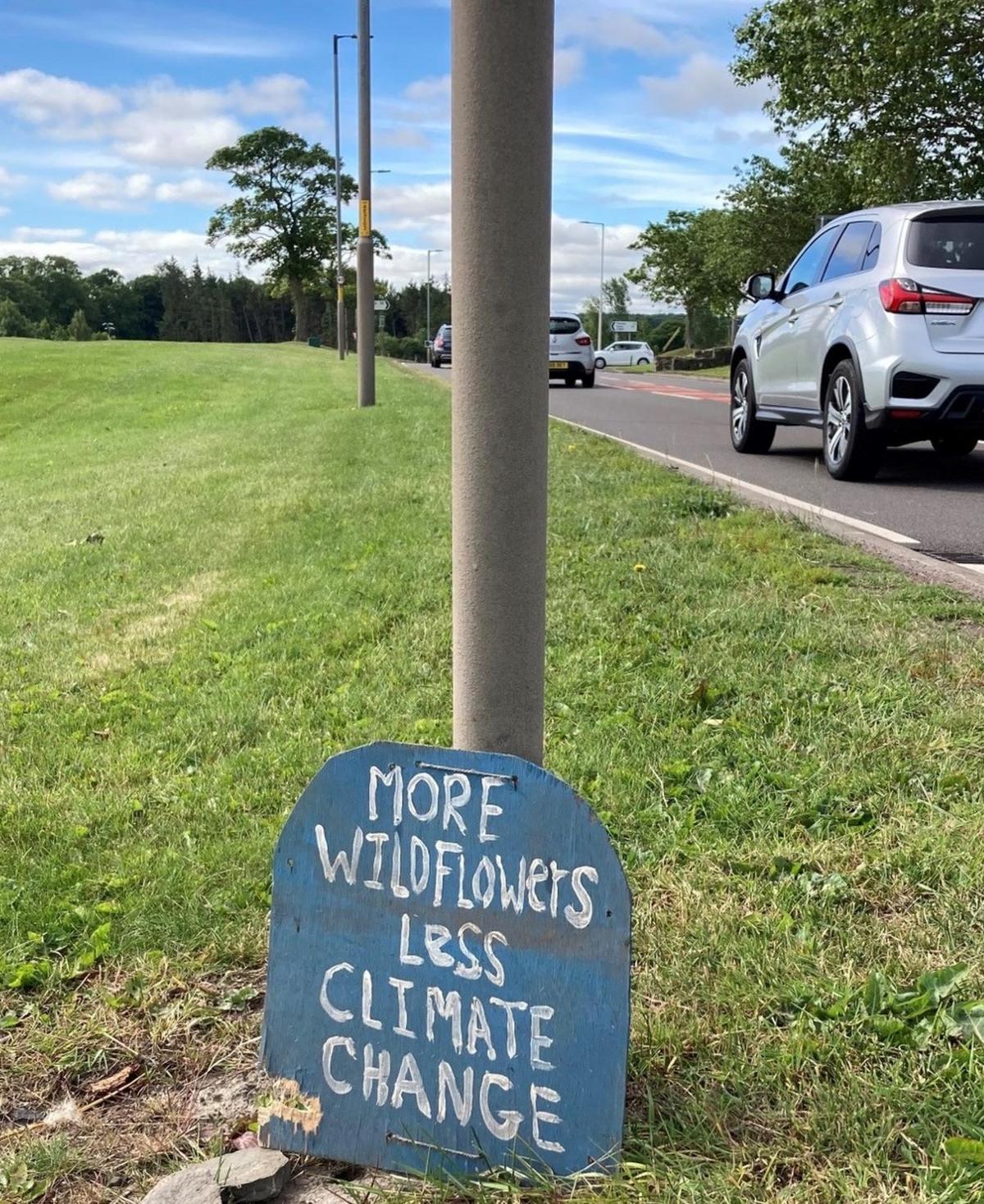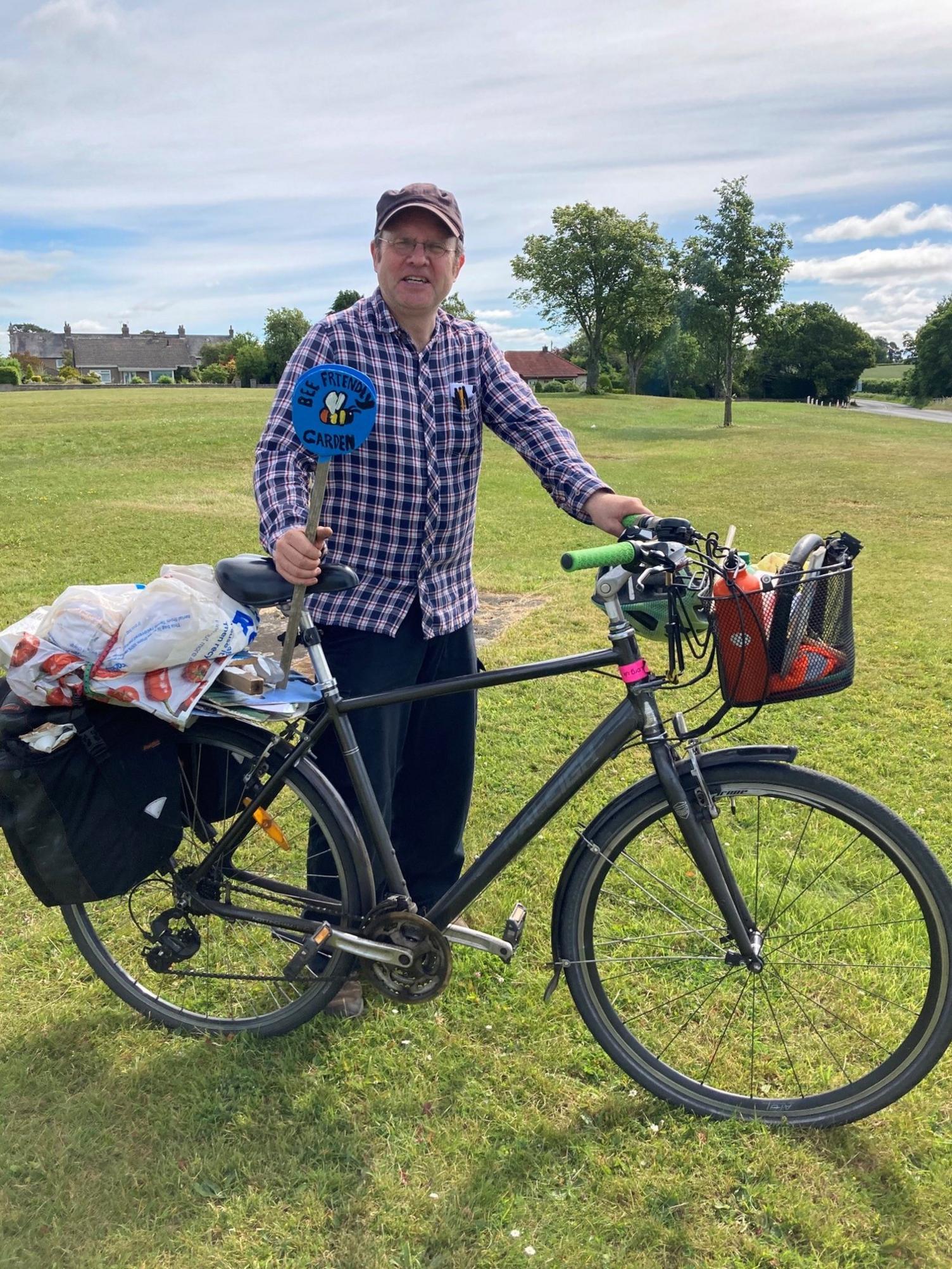The Kelso eco-artist who uses signs to help protect wildlife
- Published

Scott Barden's signs have become a familiar sight across the Borders
Over the past five years eco-artist Scott Barden has been cycling thousands of miles across his native Scottish Borders to remind drivers and pedestrians of the importance of protecting wildlife habitats.
Armed with his colourful home-made signs, the 50-year-old pedals across almost the entire region to erect his environmental messages at the entrances to towns and villages, as well as busy junctions.
His labour of love has led to support and a change of policy from various organisations, including the local authority, housing associations and even the emergency services.
Mr Barden, who also works part-time as a hospital porter and historic tour guide, began his sign-making and campaigning after discovering the damage to wildlife habitats on his doorstep.

The signs used to be taken down quickly but are now staying up for much longer
"I was doing a few small gardening projects and just learning as I went along about habitats - it slowly became clear how bad land management had become around where I lived," he said.
"The more I looked, the more I saw where we were going wrong and I was seeing how much damage we were doing to the wildlife around us.
"I felt I needed to make people aware of the situation, while protesting at the same time."
Mr Barden said that while some progress had been made he believed that a lot more needed to be done locally, as well as nationally and internationally.

Scottish Borders Council's leader said the signs had got their message across

"People often stop to tell me they are changing their habits and attitudes towards their own green spaces," he said.
"Wildlife corridors are also being created by the council to connect green spaces, both in urban areas as well as rural areas, but leaving grass to grow isn't universally popular.
"But people also tell me to mind my own business and there is often criticism against organisations who leave areas alone for the benefit of insects and other wildlife."
Mr Barden is currently working with the Scottish Fire and Rescue Service in his hometown of Kelso to create a wildlife meadow around the station.
He is also involved in a project with Scottish Borders Housing Association to make grass areas more wildlife-friendly.
But, perhaps, it is the hundred or so colourful signs - depicting everything from bees and hedgehogs to hares and frogs - that are having the biggest effect in the Borders.

Mr Barden is now working with local groups on a range of environmental projects

"The signs used to be taken down fairly quickly by people cutting the verges and green spaces, but they are certainly staying up a lot longer now," he said.
"People are taking notice of what they say.
"But my work is far from done - as long as there is destruction to the environment I can't see myself stopping my protest."
Scottish Borders Council has declared a climate emergency and work is ongoing to make the area more environmentally-friendly.
A sustainability committee was formed which oversees almost every decision now made by the Newtown St Boswells-based local authority.

Mr Barden said that although some progress had been made there was still work to be done

Leader Euan Jardine admitted Mr Barden's signs had played their part in focusing attention on the creation of more wildlife habitats.
"I have seen the signs all over the Borders for the past few years," he said.
"At first you don't think too much about them, but as time passes you start asking yourself: 'Why are they there?'.
"As a council, we are already adapting to meet the climate challenges but we have also continued to ask ourselves: 'Why are those signs by every road, telling us not to cut the grass and leave the wildflowers alone?'.
"It is important that we don't cut grass in every area we are responsible for - we need to create and leave habitats for insects and other creatures - and this is something we are now doing."